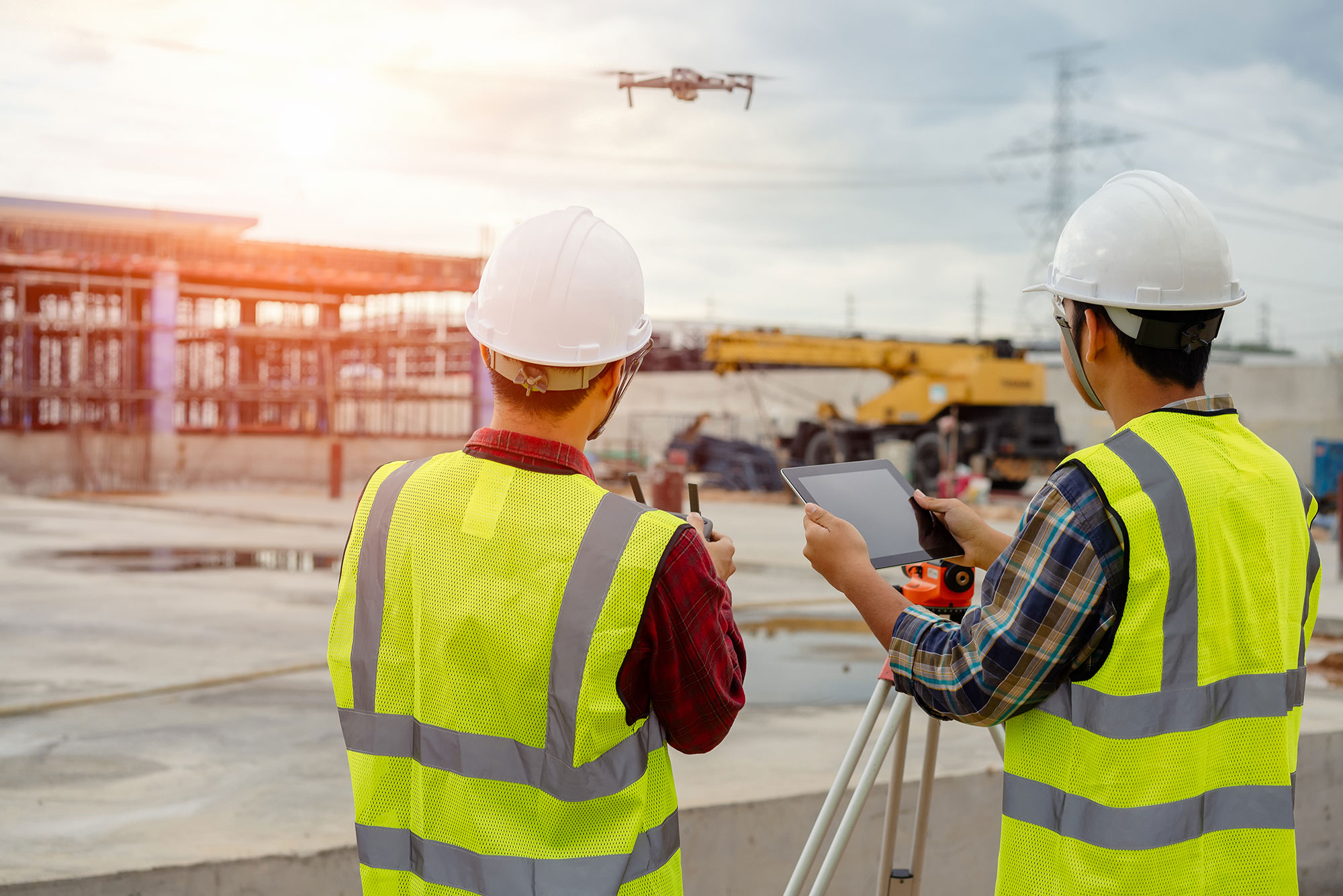
With the onset of a global pandemic, the construction industry has certainly moved out from traditional hesitancy to embrace emerging technologies. The industry has realized the importance of technology in automating construction activities. From late 2020 to now in 2021, the rate of technology adoption has skyrocketed.
The once ever-present bundles of design drawings, blueprints, schedules, and work programs that typically used to litter everywhere on construction sites have completely vanished. They’re replaced with smartphone apps, tablet computers, and software. Such technological advances in the construction sector have helped construction managers to run worksites more efficiently while optimizing their workforce and increasing the overall quality of construction.
At Construct-A-Lead we pride ourselves on being founders of a system to streamline your sales process and pipeline with data to grow your business. Knowing how our clients thrive is critical to understanding how to best serve your needs. Below are the 7 game-changing technologies that are revolutionizing the construction process that we hear about most often from our most successful clients.
Collaboration with Softwares and Apps
The success of a construction project lies heavily in collaboration and cooperation. The need was even more aggravated in a recent pandemic as we need more advanced and state-of-the-art ways to interact and get connected. With the mandated work from home orders, we need to communicate and data in real-time to avoid delivery delays and collaborate properly.
Every project can easily get off track without effective teamwork and collaboration between architects, engineers, general contractors, subcontractors, and suppliers. Advanced collaboration and communication technologies offer a far better way to convey concerns, change orders, requests and submissions while being in direct contact with site management staff and team. Even before the pandemic, the need for such technologies was there.
These apps and gadgets allow you to instantly send messages, share files, updates, and correspondence, taking paperwork entirely out of the equation. Most cloud-based collaboration tools offer real-time communication through channels, so you don’t miss a single update or a change. Advanced collaboration technologies can bring together multiple companies at different locations to collaborate for plan, design, and construction. These technologies have organization, communication, management, sharing, and viewing features.
When you streamline communication and leverage technology to enhance your overall collaboration, you make way for time to focus on other areas of your business, like pursuing new leads.
Artificial Intelligence and Productivity
AI or Artificial Intelligence has proved as a great tool to boost productivity in the manufacturing industry. The same holds even in the construction sector. AI combined with technologies like BIM helps to visualize project glitches and avoid costly rework down the road. Innovators are developing software and machines that can mimic human intelligence. Once trained with algorithms, these intelligent devices have a big impact on construction technologies and machines.
One application of AI in construction is monitoring and inspection at the site. You can monitor workers to identify safety hazards or missing PPEs to immediately alert them. Using the same scheme of work, developers are beginning autonomous construction equipment that is self-operating.
Gone are the days when planning and scheduling needs a tedious endeavor. With AI in hand, you can simulate project activities millions of times to assess the outcome and find the ideal schedule that can enhance overall efficiency and productivity. In a nutshell, AI has a plethora of applications in building design optimization, risk assessment, mitigation, predictive logistics, and forecasting outcomes.
Virtual Reality
Virtual Reality or VR is a relatively new technology that is the way construction visualization is done. VR has taken the 3D modeling of projects to the next level. With VR, the user is directly placed inside the virtual environment model to experience full immersion in the virtual space. VR technology makes it possible to examine even the most minute detail by walking through the virtual site.
This technology is very beneficial for designers working in remote areas where access is not that simple. With VR technology in hand, you can see the project site without traveling to it. VR has revolutionized the way project designs are represented and simulated. VR also gives clients a better way to understand the project scope, thus facilitating a simpler decision-making process. This technology also helps contractors simulate the complexities and dependencies of construction sequencing.
Enhancing Productivity with BIM
BIM software allows engineers to create a structure on a computer prior to constructing it in the field. This digital representation of a building in terms of both physical and functional characteristics helps to determine demolition and construction decisions. BIM has taken construction management to the next level. You can detect issues in early states identifying challenges of limited manpower, tight budgets, conflicting requests, and accelerated schedules. BIM also makes construction more efficient by cutting material costs. Because of different layers, you can put all systems including mechanical, electrical, plumbing, data management, and material management right in the BIM model to plan, design, analyze, and effectively construct buildings. BIM enables the managers to share relevant models with subcontractors to ensure smooth design and pre-construction operations.
Personal Protective Equipment
Construction projects are unique and challenging that involve risky maneuvers and perilous work-fronts. In comparison with all other industries, the construction sector has the most workspace deaths every year. That’s why technology companies and startups are working to develop smart and sensor-fitted protective equipment and wearable devices.
Construction companies and managers are now collaborating with technology companies to provide wearables with embedded biometrics and environmental sensors that include GPS for location tracking, Wi-Fi, and voltage detectors. These smart wearables help managers to monitor worker’s movements, motions, postures, and other incidents of slips and falls.
Such devices not only protect individual workers from safety hazards but also help managers track their health parameters like heart rate and body temperature. The manager is notified if the worker is suffering from fever or other distress.
Robots and Drones
Many construction companies are looking to reduce the number of on-site workers without impacting productivity through the use of robots and drones. Robots are undertaking simple and repetitive tasks that are labor-intensive like laying bricks, pouring concrete walls, tying rebar, or even installing drywall. Although you can’t eliminate the need for some work by manual labor, it still can enhance productivity and help them undertake a hard job leveraging modern tools.
Drones, just like robots, are finding a plethora of applications in construction projects. Drone technology has evolved over recent years. Now they are fitted with cameras, laser scanners, and other collection devices. From surveying to conducting Jobsite inspections and from monitoring progress to the identification of safety hazards, construction drones have a lot to offer. You can also use construction drones for monitoring workers, ensuring safety and productivity.
Modular, Offsite, and Prefab Construction
Prefabricated and modular construction is now seen as a cost-effective and faster alternative to traditional construction. These techniques have evolved during the pandemic and provide an opportunity for the owners to speed up construction projects and reduce inefficiencies found on typical job sites.
Offsite construction involves the fabrication and assembly of building components on a location other than the actual area or site. Prefabricated and modular buildings are two different types of offsite construction performed in a controlled environment just like a factory or manufacturing plant.
Experts consider offsite construction as less time-consuming, sustainable, safe, flexible, and cost-efficient. However, you still have to monitor the quality of every section of the structure.
In Modular construction, rooms or amenities are constructed entirely including MEP, finishes, and fixtures. Then these building components are shifted to job sites where they are assembled and installed. These prefabricated buildings are transported to a site where the only foundation is constructed or tie-down anchors are provided.
The Bottom Line
Whether you’re a contractor, consultant, or client, working in an increasingly competitive and risky construction industry is not simple, and finding ways to leverage these advancements to innovate will streamline processes, improve safety, reduce costs, minimize frustrations, and collaborate well towards more successful projects.
The future lies in technology and the sooner you start leveraging it in your construction business the better. At Construct-A-Lead, we leverage technology every day to deliver the best data and leads to our clients. We’re part of the technology services that your business can’t live without!
STAY UP-TO-DATE!
Subscribe to receive our newsletters with insights and tips from industry experts.
RECENT ARTICLES
Top 7 Reasons Construction Companies Choose Construct-A-Lead for Reliable Leads
Discover how Construct-a-Lead simplifies lead generation for commercial construction firms with accurate data, user-friendly features, and customizable subscription plans.
The Goal of Urban Renaissance: How Professional Soccer Drives Stadium-Centric Development in the US and Canada
Discover how professional soccer is fueling a renaissance in urban development, with stadiums emerging as the focal points of dynamic city districts. From economic revitalization to community engagement, explore the transformative power of sports infrastructure.
Leads to Fill Your Pipeline
Discover effective techniques for transforming identified leads into tangible business opportunities, ensuring your sales funnel is consistently replenished with promising prospects.




